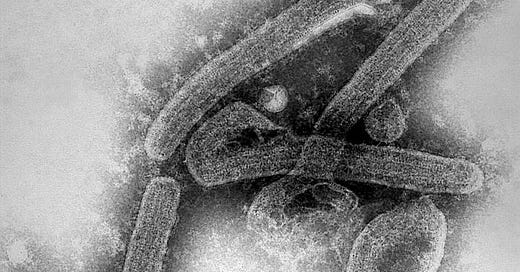In a follow-up on the Marburg Virus Disease (MVD) outbreak in Rwanda, days after The Ministry of Health of the Republic of Rwanda declared a Marburg virus disease (MVD) outbreak on 27 September 2024, officials report two additional confirmed cases, now 29 total, and one additional death, for a total of 10 with a case fatality of slightly more than 34 percent.
A large percentage of the cases and deaths are reported in health care workers.
Over 297 contacts have been registered and are under follow-up.
Cases are in seven out of 30 districts-the three Kigali districts (Nyarugenge, Kicukiro, and Gasabo), Kamonyi (just west of Kigali), Nyagatare, and Rubavu districts. Nyagatare borders Tanzania and Uganda, while Gatsibo borders Tanzania and Rubavu borders DRC.
Given the high population movement across borders, there is a heightened risk for cross-border spread.
On September 29th, the Africa Centers for Disease Control and Prevention (Africa CDC) dispatched a team of experts to aid in response efforts in Rwanda. Africa CDC is also collaborating with the Ministry of Health and neighboring countries of Burundi, Uganda, Tanzania, and DR Congo to assist in addressing the cross-border aspects of the outbreak and to provide guidance on regional surveillance strategies to contain the outbreak.
The MOH presented to development partners the situation and priority response measures, including (1) collaborative surveillance (contact tracing on health systems and training, active case search at all levels, and point of entry screening in Kigali and land borders); (2) emergency coordination (activation of the operations center and cells at decentralized level); and (3) community awareness (implementing effective risk communication and RCCE measures, safe and scalable care (designated treatment centers), and countermeasures and research, including medications such as Favipiravir, Ribavirin, and MBP091.
Marburg virus disease (MVD) is a severe and often fatal zoonotic hemorrhagic illness caused by the Marburg virus. The virus is usually transmitted to humans from fruit bats. Human-to-human transmission occurs through direct contact with an infected person’s body fluids, or with equipment and materials contaminated with infectious blood or tissues. There is currently no vaccine or specific treatment for MVD, so supportive therapy should be initiated immediately for any individuals presenting with the disease. The same infection prevention and control protocols used for other viral hemorrhagic fevers, such as Ebola, should be followed to prevent transmission.






